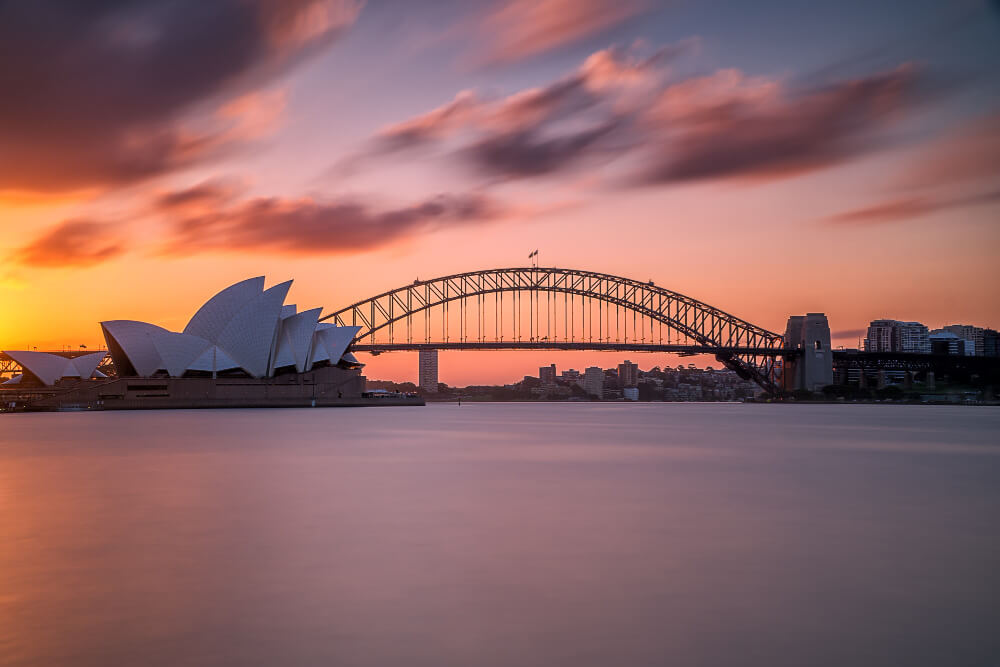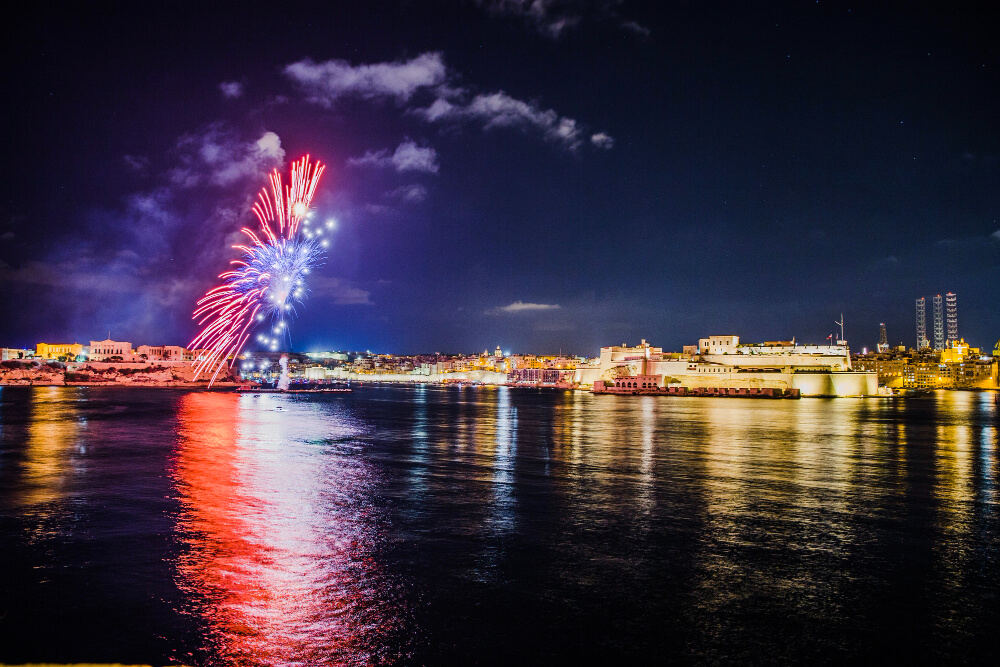The Sydney Opera House, an iconic landmark in Australia, is a renowned performing arts venue located in Sydney Harbour.
Designed by Danish architect Jørn Utzon, this architectural masterpiece is characterized by its distinctive sail-like roof structure, which has come to symbolize the city of Sydney itself.
Since its completion in 1973, the Sydney Opera House has become a symbol of Australia’s cultural identity and a UNESCO World Heritage Site, attracting millions of visitors each year.
One of the key features of the Sydney Opera House is its innovative design, which combines modernist principles with elements of expressionist architecture.
The building’s unique sail-like shells are made up of over one million glazed white tiles, giving the structure a shimmering appearance when viewed from a distance.
The Sydney Opera House also houses multiple performance venues, including the Concert Hall, Opera Theatre, Drama Theatre, and Playhouse, providing a platform for a wide range of artistic performances.
In the upcoming section, we will delve deeper into the history and significance of the Sydney Opera House, exploring its impact on Australian culture and the global architectural landscape.

- The Sydney Opera House was designed by Danish architect Jorn Utzon and took 14 years to complete, opening in 1973. Its distinctive sail-like roof has become an iconic symbol of Australia.
- Due to cost blowouts, construction challenges, and political disputes, Utzon resigned from the project before the Opera House was completed. This decision sparked controversy and led to ongoing debates about the building’s history and significance.
- The Sydney Opera House hosts a wide range of performances and events, including operas, symphonies, ballets, and more. Its multiple venues cater to various art forms and cultural activities, making it a hub for artistic expression and creativity.
- In 2007, the Sydney Opera House was designated a UNESCO World Heritage Site, recognizing its architectural innovation and cultural importance. Visitors from around the world flock to admire its unique design and enjoy the diverse array of performances showcased within its walls.
- Through its rich history and enduring legacy, the Sydney Opera House continues to inspire artists, architects, and visitors alike. Its significance transcends geographical boundaries, symbolizing Australia’s cultural identity and serving as a symbol of artistic excellence on a global scale.
The Beginnings of the Sydney Opera House
The Sydney Opera House, a world-renowned architectural masterpiece, has a fascinating history that dates back to the mid-20th century.
The idea for the Sydney Opera House was conceived in the late 1940s, when the New South Wales government decided to build a new opera house to replace the existing Sydney Town Hall.
In 1957, an international design competition was held to select the architect for the project, which was ultimately won by Danish architect Jørn Utzon.
Construction began in 1959, but due to various challenges, including design changes and budget overruns, the project was not completed until 1973.
The design of the Sydney Opera House is truly unique, with its iconic sail-like shells that seem to float on the harbor.
Utzon’s vision was inspired by nature, particularly the segments of an orange, and he wanted the building to blend seamlessly with its surroundings.
The construction of the Opera House was a monumental task, requiring innovative engineering solutions to bring Utzon’s vision to life.
Today, the Sydney Opera House is not only a symbol of Australia but also a UNESCO World Heritage Site.
The Cultural Impact of the Sydney Opera House
Since its opening in 1973, the Sydney Opera House has become a cultural hub and a symbol of Australia’s artistic and creative spirit. **The Opera House hosts over 1,500 performances each year, ranging from opera and ballet to theater and music concerts. It has also become a venue for international events, such as the Sydney Festival and Vivid Sydney.
The Opera House’s iconic design has made it a popular tourist attraction, drawing millions of visitors from around the world each year.
The Sydney Opera House has played a significant role in shaping Australia’s cultural identity and fostering artistic expression.
It has provided a platform for both established artists and emerging talents to showcase their work and has helped to promote Australian arts on the global stage. The Opera House’s diverse programming reflects the rich cultural tapestry of Australia and celebrates the country’s vibrant arts scene.
The Legacy of the Sydney Opera House
As one of the most recognizable buildings in the world, the Sydney Opera House has left a lasting legacy on the architectural landscape and cultural heritage of Australia. **The Opera House has inspired countless architects and designers with its innovative and visionary design, pushing the boundaries of what is possible in architecture. Its inclusion on the UNESCO World Heritage List in 2007 further solidified its status as a cultural icon.**
The Sydney Opera House continues to be a symbol of creativity, innovation, and excellence, serving as a beacon for the arts community in Australia and beyond. Its enduring legacy is a testament to the power of architecture to inspire, unite, and enrich the lives of people around the world.
What is the significance of the Sydney Opera House in Australian history
The Sydney Opera House is an iconic symbol of Australia and a UNESCO World Heritage Site.
It holds immense cultural significance as a venue for performing arts and has become a major tourist attraction in Sydney.
The design and construction of the Opera House also represent a significant architectural achievement, showcasing the innovative and groundbreaking work of Danish architect Jørn Utzon.
How did the idea for the Sydney Opera House come about
The idea for the Sydney Opera House was first proposed in the 1940s, with the goal of creating a world-class performing arts venue for the city.
The project gained momentum in the 1950s when an international design competition was held, attracting entries from architects around the world.
Jørn Utzon’s design was ultimately selected as the winning entry, leading to the construction of the iconic building that we know today.
What challenges were faced during the construction of the Sydney Opera House
The construction of the Sydney Opera House faced numerous challenges, including budget overruns, engineering difficulties, and political controversies. Jørn Utzon’s ambitious design presented unique structural challenges, particularly in the construction of the iconic sail-like shells that make up the roof of the building.
These challenges ultimately led to Utzon’s resignation from the project in 1966, with the building being completed by a team of local architects and engineers.

How has the Sydney Opera House evolved over the years
Since its completion in 1973, the Sydney Opera House has undergone several renovations and upgrades to modernize its facilities and improve its functionality.
The building has also expanded its programming to include a wider range of performing arts events, from opera and ballet to concerts and theater productions. The Opera House continues to be a vibrant cultural hub in Sydney, attracting millions of visitors each year.
What is the architectural style of the Sydney Opera House
The Sydney Opera House is known for its unique and innovative architectural style, characterized by its sail-like shells that form the roof of the building.
The design is often described as a blend of modernist and expressionist architecture, with a focus on organic forms and sculptural elements.
The building’s white ceramic tiles and curved shapes reflect the influence of Utzon’s Scandinavian heritage and his vision for a harmonious relationship between architecture and nature.
What are some of the key features of the Sydney Opera House
Some of the key features of the Sydney Opera House include its iconic sail-like shells, which are made up of over one million ceramic tiles.
The building also houses multiple performance venues, including the Concert Hall, Opera Theatre, Drama Theatre, and Playhouse, which host a wide range of cultural events throughout the year.
The Opera House also features several restaurants, bars, and outdoor spaces that offer stunning views of Sydney Harbour.
How has the Sydney Opera House influenced the cultural landscape of Australia
The Sydney Opera House has had a profound impact on the cultural landscape of Australia, serving as a hub for artistic expression and creativity.
The building has hosted some of the world’s most renowned performers and artists, contributing to the growth of Australia’s performing arts scene.
The Opera House has also become a symbol of national pride and identity, representing the country’s commitment to excellence in the arts.
What are some interesting facts about the Sydney Opera House
One interesting fact about the Sydney Opera House is that it took 14 years to complete construction, from 1959 to 1973.
Another fun fact is that the building’s shells are actually made up of precast concrete panels, not ceramic tiles as they appear.
Additionally, the Opera House is home to the world’s largest mechanical organ, with over 10,000 pipes and a range of musical capabilities.
How can visitors explore the history of the Sydney Opera House
Visitors can explore the history of the Sydney Opera House through guided tours, exhibitions, and interactive displays that showcase the building’s design and construction process.
The Opera House also offers a range of educational programs and events that delve into the cultural significance of the building and its impact on Australian society.
Additionally, visitors can learn more about the Opera House’s history through online resources, books, and documentaries that delve into the building’s fascinating story.
What is the future of the Sydney Opera House
The future of the Sydney Opera House looks bright, with ongoing efforts to preserve and enhance the building for future generations.
The Opera House continues to attract top-tier performers and artists from around the world, ensuring that it remains a leading cultural institution in Australia.
Plans for future renovations and upgrades are also in the works, aimed at improving the building’s sustainability and accessibility while maintaining its iconic design and heritage.
Frequently Asked Questions
First Performances: The first person to perform at the Opera House was African American vocalist Paul Robeson. He performed during construction, years before the project was completed.
The first public performance at the House was the Australian Opera’s take on Prokofiev’s epic War and Peace on 28 September 1973, a month before the House’s official opening by Queen Elizabeth II
Design and Inspiration: The design of the Opera House was inspired by nature, particularly birds, clouds, walnuts, and trees, rather than sails of a ship as commonly believed.
The sail-like structures were derived from the surface of a sphere, marking a milestone in 20th century architecture
Construction and Costs: The Opera House was expected to take four years to build but took 14 years, involving 10,000 construction workers.
The original cost estimate was $7 million, but the final cost was $102 million, largely paid for by a State Lottery
UNESCO World Heritage Site: The Sydney Opera House was added to UNESCO’s World Heritage List in 2007, making it the youngest ever to be included on the list and only one of two cultural sites inducted while the architect (Jørn Utzon) was still alive
Notable Events and Visitors: Queen Elizabeth II opened the Opera House in 1973 and has visited four times, most recently in 2006.
Arnold Schwarzenegger won his final Mr Olympia bodybuilding title in 1980 at the Opera House.
A wild New Zealand fur seal, named ‘Benny’, has been regularly spotted sunbathing on the Opera House’s northern VIP steps since 2014.